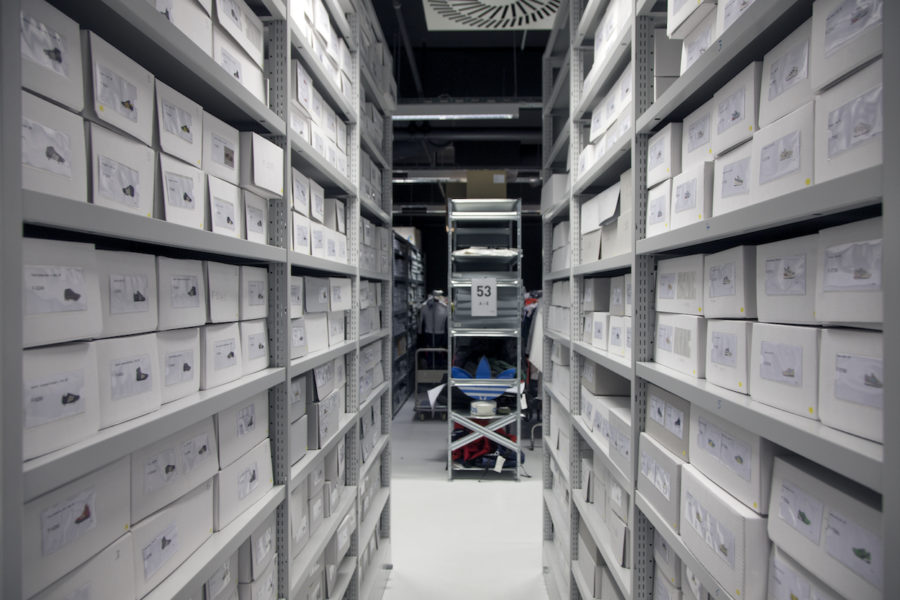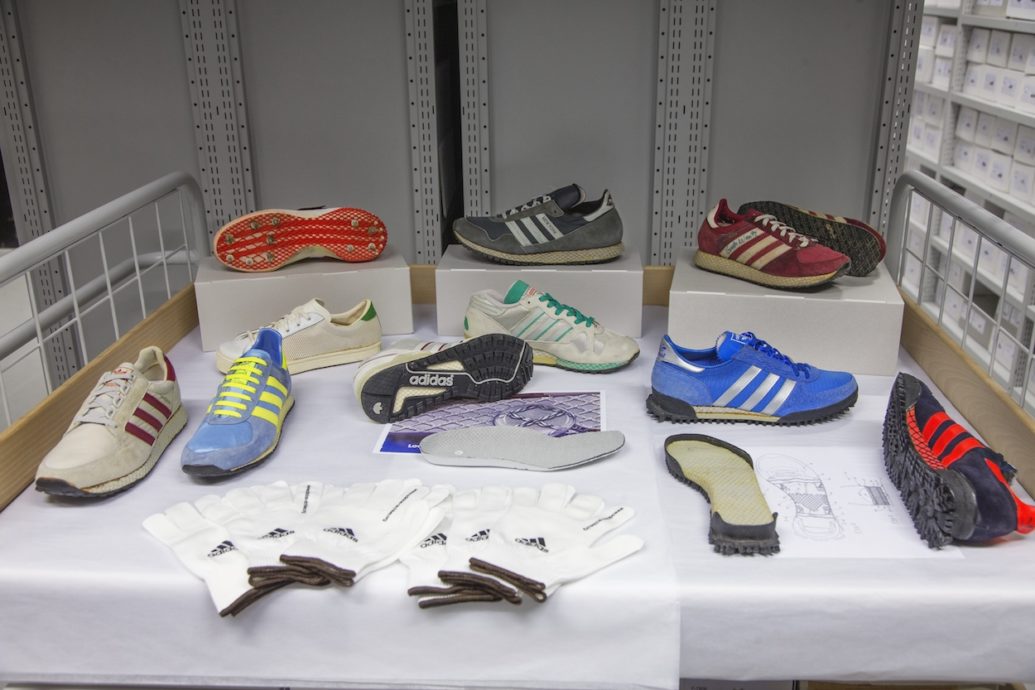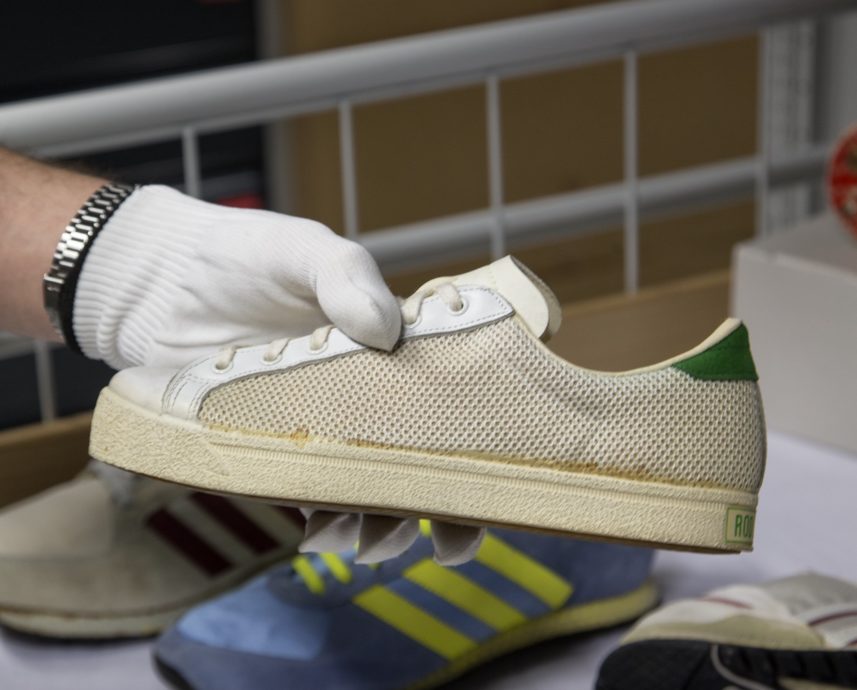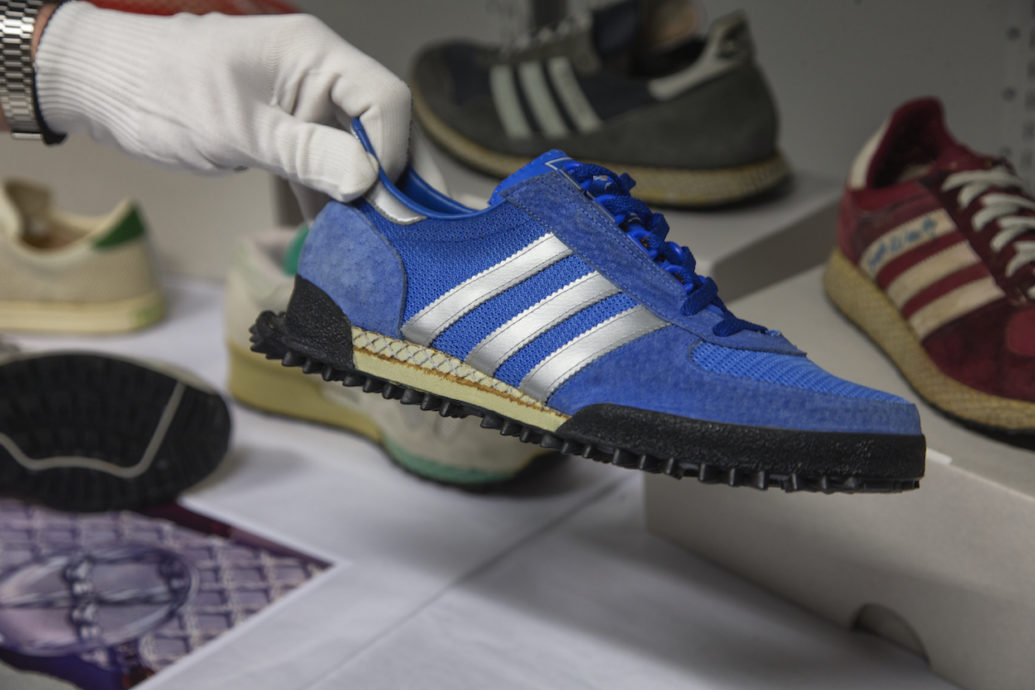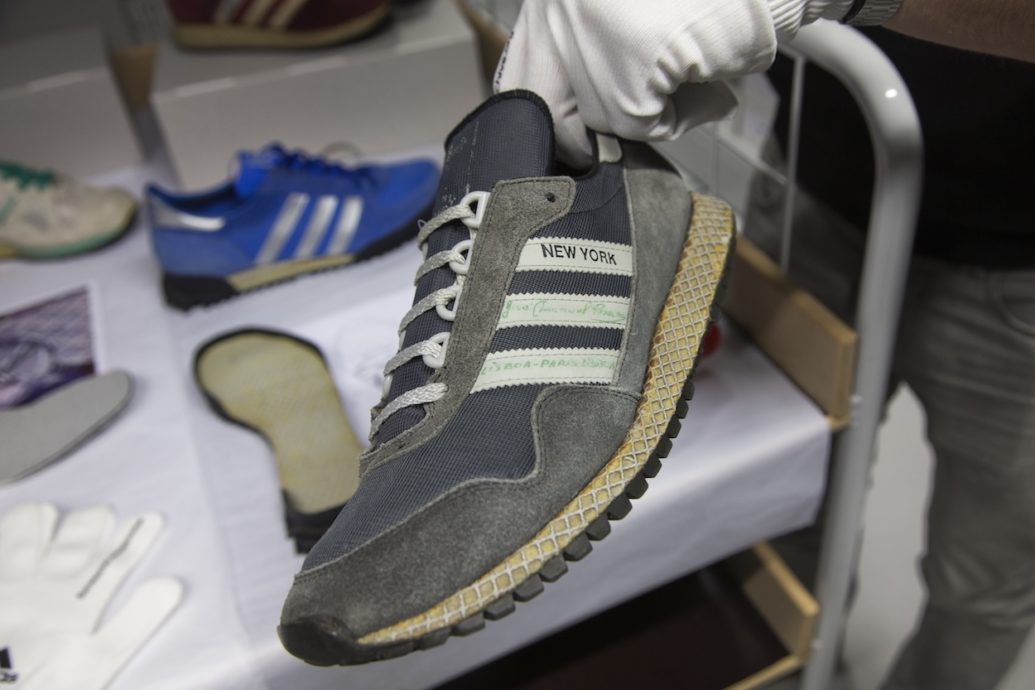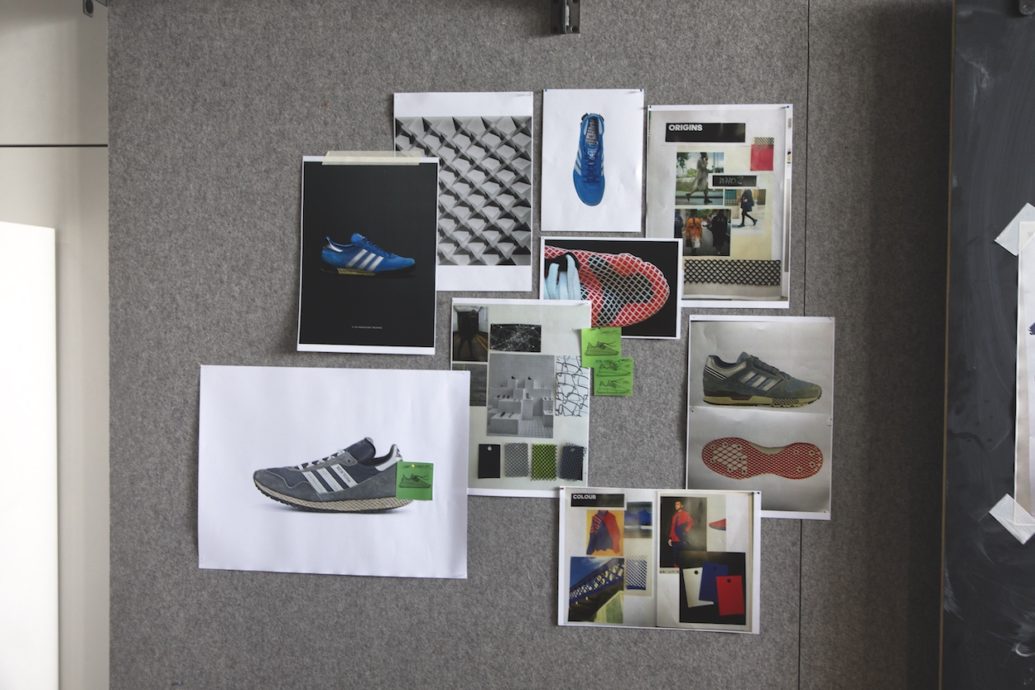On the ground floor of a vast, building in Adidas’s Herzogenaurach, Germany, headquarters sits a sneakerhead’s dream: the brand’s archive of over 80,000 shoes, garments, accessories, videos, and technical drawings. Inside the temperature- and climate-controlled space, gray corridors are lined with white boxes, meticulously cataloged, and stored with contents to be handled only by white-gloved fingers. Run and organized by a team of specialists with museum backgrounds, the space is home to items like founder Adi Dassler’s earliest cleats, Muhammad Ali’s signed boxing shoes, and the company’s very first bag design.
For the Adidas Originals design team and its collaborators (yes, Kanye and Pharrell have been here), this isn’t a museum, it’s a resource. “I have to remind my team that it’s a reference,” says Nic Galway, global senior vice president of design for Adidas Originals and Style. “We shouldn’t be afraid to go in and explore, because a look at the archive is better than the internet. Everything in there is innovative, challenging, and, I believe, industry-leading.” Considering the sheer amount of product in Adidas’s history, much of what the Originals team focuses on is timing. “We must never forget timeliness. Knowing just the right moment to bring something back is key.” And it’s something they continue to master.
